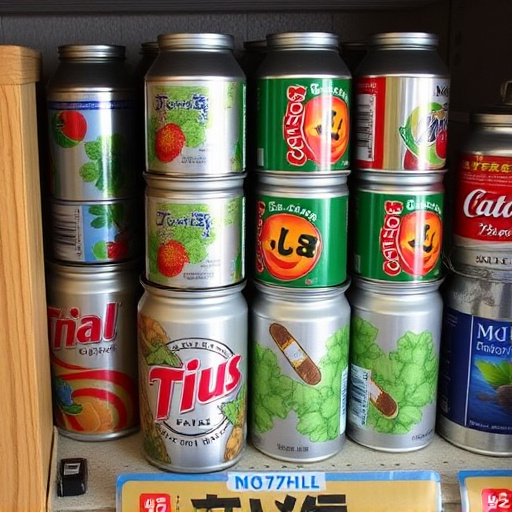Discover how concealed diversion safes, disguised as everyday items like books or fire extinguishers, offer a unique and effective defense against theft. These innovative, discreet storage solutions come in various forms, from fake rocks with hidden compartments to designed gadgets with secret locking mechanisms. As outlined in the Concealed Diversion Safe Comparison Guide, options cater to specific needs, ensuring belongings remain secure while appearing innocuous. Key considerations include discretion, size, locking mechanisms, water resistance, and fire ratings, making these safes ideal for both personal and business security applications.
“Enhance your everyday items with a covert compartment—a discreet, yet powerful security solution. This comprehensive guide, ‘Concealed Diversion Safe Comparison Guide’, explores how everyday objects can double as diversion safes, keeping valuables hidden and secure. From understanding the fundamentals of covert compartmentalized units to real-world success stories, this article delves into the factors to consider when comparing concealed safe options. Discover the versatility and effectiveness of these innovative security measures.”
- Understanding the Covert Compartmentalized Security Units
- Types of Everyday Items as Diversion Safes
- Factors to Consider When Comparing Concealed Safe Options
- Real-World Applications and Success Stories
Understanding the Covert Compartmentalized Security Units
Covert compartmentalized security units, often referred to as concealed diversion safes, are innovative solutions designed to protect valuable items from unauthorized access. These sophisticated devices offer a discreet way to store possessions securely while blending seamlessly with everyday objects. By utilizing hidden compartments within seemingly ordinary items like books, fire extinguishers, or even kitchen appliances, these units provide an extra layer of safety for sensitive materials.
When comparing concealed diversion safes to traditional locking mechanisms, the former offers a unique advantage—the element of surprise. Their design allows them to be placed in plain sight without raising suspicion. This strategic placement makes it difficult for potential thieves to identify and access hidden contents, providing a robust defense against theft or unauthorized removal. A comprehensive comparison guide would highlight various models, their camouflage capabilities, size options, and advanced features that cater to different security needs, ensuring individuals have the right tool for enhanced protection.
Types of Everyday Items as Diversion Safes
Everyday items can serve as clever concealed diversion safes, offering discreet storage solutions for valuable possessions. From simple household objects to cleverly designed gadgets, these items provide an innovative way to enhance security while maintaining an air of normalcy. For instance, a fake rock with a hidden compartment can blend seamlessly into your garden, while a book with a secret locking mechanism allows you to hide valuables within the pages.
In terms of a Concealed Diversion Safe Comparison Guide, various options are available, each catering to specific needs and preferences. Consider a magnetic secret compartment hidden behind a picture frame for easy access or a hollowed-out pen holder that fits discreetly on your desk. These items provide an effective layer of protection, ensuring your belongings remain secure while appearing innocuous.
Factors to Consider When Comparing Concealed Safe Options
When comparing concealed safe options, understanding your specific security needs is paramount. The first factor to consider is discretion. A truly effective covert compartment must blend seamlessly into its surroundings, whether it’s tucked away in a bookcase or hidden within everyday items like a briefcase or fire extinguisher. Look for safes designed with camouflage features that mimic their environment, such as realistic textures and colors.
Next, size and capacity are crucial. Assess the size of the items you wish to secure and ensure the safe can accommodate them. Consider also the type of locking mechanism. Combination locks offer convenience and security, while key-based systems provide an extra layer of protection. Additionally, features like water resistance and fire ratings further enhance safety, making them essential considerations in a concealed diversion safe comparison guide.
Real-World Applications and Success Stories
In everyday life, where security and discretion are paramount, the covert compartment has found its place as a game-changer. These innovative hidden storage solutions offer a range of real-world applications, from personal safety to business security. For instance, individuals can use concealed diversion safes to store valuable items or emergency supplies discreetly within their homes, providing an extra layer of protection against theft or unexpected events.
The success stories surrounding these products are numerous. Many users have praised their effectiveness in enhancing home security and peace of mind. Businesses, especially retail stores and offices, have also benefited from covert compartments to safeguard valuable assets, sensitive documents, and confidential information. A well-placed hidden safe can deter theft and provide a sense of security that traditional locks cannot match, making it an attractive option for anyone seeking discreet protection.
In this comprehensive guide, we’ve explored the world of covert compartmentalized security units, highlighting their versatility as concealed diversion safes. By understanding different types and considering factors like size, functionality, and price, you can make an informed decision based on your unique needs. From securing valuable items at home to protecting sensitive documents on the go, the right concealed safe can offer peace of mind in today’s world. As you navigate your options, remember that a well-chosen concealed diversion safe is not just a security measure but also a strategic investment for any individual or business seeking discretion and protection.
